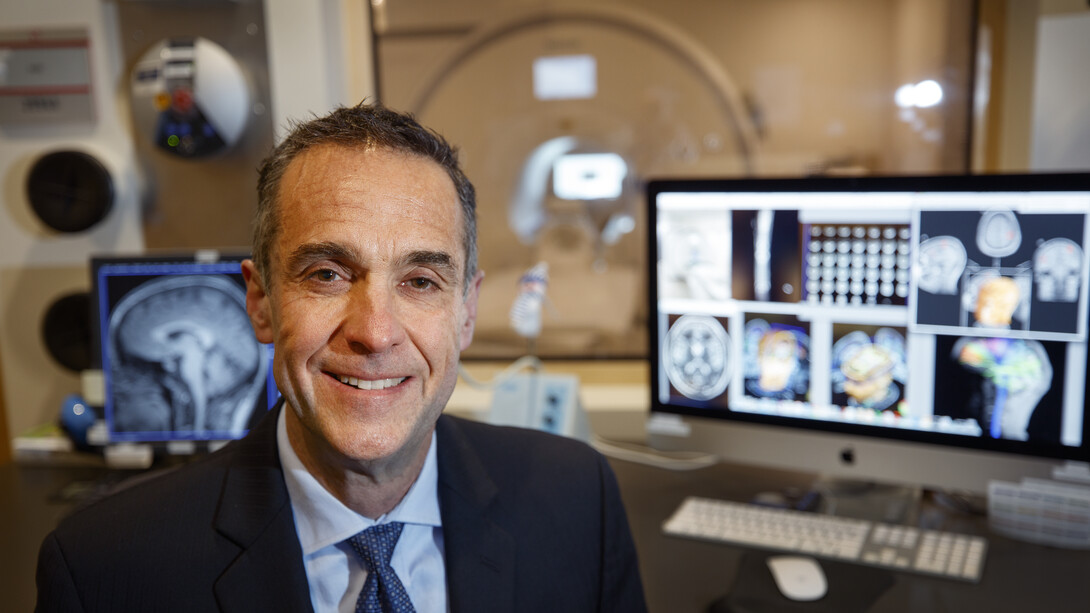The Center for Brain, Biology and Behavior (CB3) is a multidisciplinary research center, built into the southeast corner of Memorial Stadium, just across the sidewalk from Burnett Hall. Despite our visibility and close proximity, many in Psychology may not be aware of all we have to offer and how intricately tied we are to department faculty and students. In this Newsletter feature, I aim to get everyone up to speed on CB3!
CB3 has two primary research core facilities. The first is our MRI facility, highlighted by a 3 Tesla Siemens magnetic resonance imaging (MRI) system. This is a state-of-the-art modern, high field research and clinical imaging system that provides high-resolution information about the structure and function of the brain. Investigators can simultaneously acquire MRI data, along with high-density electroencephalography/event-related potentials (EEG/ERP), eye tracking, and measures of psychophysiology. The ability to collect these diverse data simultaneously provides CB3 investigators with a very powerful tool to study relationships between brain structure, function and behavior. CB3 recently recruited a new faculty member, Dr. Doug Schultz, who is also a Research Assistant Professor of Psychology. Doug is available to consult with new or experienced MRI users and discuss study design and data analysis.
Our other core research facility is the Salivary Biosciences Laboratory (SBL). The SBL is located on the Athletics side, adjacent to the Nebraska Athletic Performance Laboratory (NAPL), connected to CB3 by a bridge on our “C” level. The SBL is a partnership between CB3 and NAPL, and is open to academic researchers and to members of the Athletics staff. Saliva contains many biomarkers, such as cortisol, testosterone, melatonin, and C-Reactive Protein, to name just a few. Saliva contains many of the same biomarkers as blood with clear advantages in terms of ease of acquisition and simplicity of storage and shelf-life. For instance, salivary samples can be easily acquired in field studies and later analyzed in the SBL laboratory, without the complications of blood (e.g., the need for rapid separation of components and freezing).
In addition to the two core research facilities, CB3 houses additional shared equipment for EEG/ERP, psychophysiology, eye tracking, vestibular testing, and functional near-infrared spectroscopy (fNIRS; an alternative to fMRI for measuring cortical brain function). Most of these non-core facilities are available to faculty and students at little or no charge.
Though CB3 is an interdisciplinary center–with faculty representation across many departments and colleges–Psychology has by far the largest footprint and our Department’s faculty and students are tightly integrated into the program. For example, I am both the Director of CB3 a member of the Psychology faculty. Maital Neta, assistant professor of psychology, is one of the Associate Directors of CB3. In addition, 11 of the 18 full-time CB3 Resident Faculty have their primary appointments in Psychology, and an additional 11 of our Faculty Affiliates are Psychology faculty. Many Psychology students, graduate and undergraduate, are based in CB3 and actively use our facilities for their mentored research.
If you would like to find out more about CB3, go to our website. In addition to information about CB3, you can find contact information for specific faculty or general information about the center. You can also reach out directly to me via email.

By Cary Savage